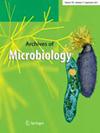Identification, biological characterization of Cladobotryum mycophilum and its control during the fruiting process of Lyophyllum decastes
Abstract
Lyophyllum decastes is a type of edible and medicinal mushroom with high nutritional value. However, it can be infected by fungi during the fruiting process, which impairs the development of the industry. In this study, one pathogenic fungus was isolated from the diseased fruiting bodies of L. decastes. Morphological and molecular identification clarified that the causal agent of the disease was Cladobotryum mycophilum. Koch’s postulates showed that C. mycophilum could infect L. decastes, and seriously affect mushroom yields. The biological properties of C. mycophilum were investigated. The data showed that the most suitable temperature for the growth of C. mycophilum was 25 °C with a mean growth rate of 21.45 mm d− 1 on PDA. C. mycophilum was better suited to growing in neutral or slightly acidic environments. The suitable carbon source and nitrogen source for C. mycophilum growth were lactose and peptone or yeast extract respectively. The IC50s (Half maximal inhibitory concentration) values of carbendazim and prochloraz for inhibiting C. mycophilum are respectively 1.244 µg.mL− 1 and 3.323 µg.mL− 1. 10 µg.mL− 1 carbendazim can effectively control C. mycophilum during the L. decastes fruiting process. The results of this study can provide knowledge for the control of cobweb disease during the L. decastes fruiting process.

 求助内容:
求助内容: 应助结果提醒方式:
应助结果提醒方式:


